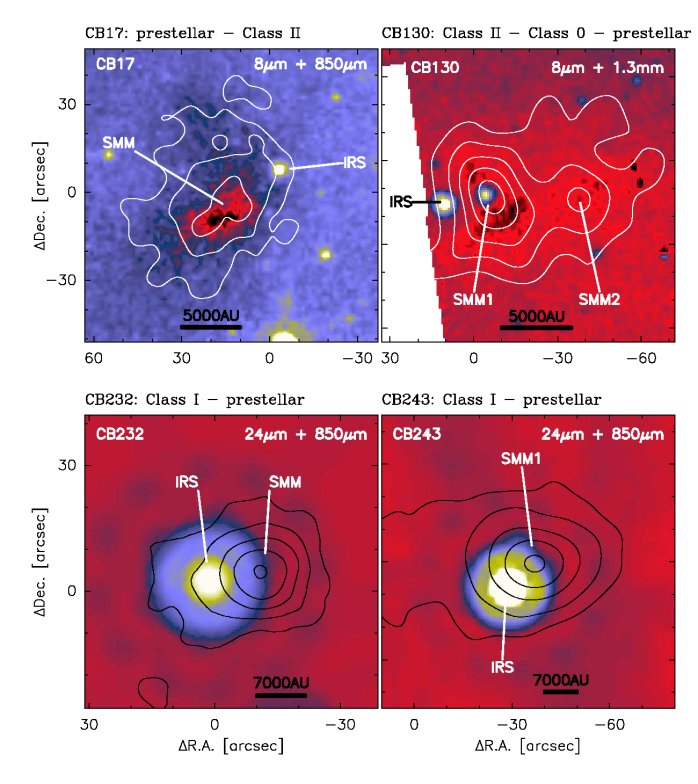| EPoS Contribution |
|
Isolated low-mass star formation - complex and non-coeval
Ralf Launhardt Max-Planck-Institut für Astronomie, Heidelberg, Germany | |
| Low mass stars are the most numerous stars in the universe. However, several key aspects of their early formation stages remain unsolved or controversial. While larger star-forming complexes are well-suited to investigate, e.g., the origin of the stellar mass spectrum, many of the difficulties in studying the properties of individual cores can be partially overcome by observing relatively simple nearby and isolated regions, such as Bok Globules. We have studied 32 Bok globules at several NIR and submm wavelengths, compiled and modeled the SEDs of the embedded sources, and derive their individual evolutionary stages. The power of this study, which is now continued and complemented by our Herschel GTO key project "EPoS", results from the combination of deep and spatially well-resolved data at several wavelengths from the visible all the way through mm wavelengths. While this work represents for a large part a complete inventory of the star-forming activities in such isolated globules, the analysis of the results lead to some unexpected conclusions. We find that at least two thirds of the star-forming globules show evidence of forming multiple stars on scales between 1,000 and 50,000 AU, which is not too unexpected by itself. However, the majority of them contain sources at clearly different evolutionary stages, e.g., prestellar or protostellar cores with nearby Class I or II YSOs. This widespread non-coevality possibly suggests a picture of slow and sequential star formation in isolated globules. I will focus my presentation on this aspect. | |
 | |
| Caption: Four examples of globule cores in which mid-infrared (MIR) and submm sources are not identical and which obviously contain two or more sources of different evolutionary stage with a few thousand AU. For CB17 and CB130 we could compile separate SEDs of the individual sorces. The submm maps of CB232 and CB243 do not resolve the contributions from the MIR sources, but the positional discrepancy between submm and MIR sources is confirmed independently by comparing data from different telescopes and at different wavelengths. | |
| Collaborators: D. Nutter, Cardiff U, UK D. Ward-Thompson, Cardiff U, UK T. L. Bourke, CfA, USA Th. Henning, MPIA, Germany T. Khanzadyan, U of Ireland Galway, Ireland M. Schmalzl, MPIA, Germany S. Wolf, U of Kiel, Germany R. Zylka, IRAM, France |
Suggested Session:
Cores and Collapse |

